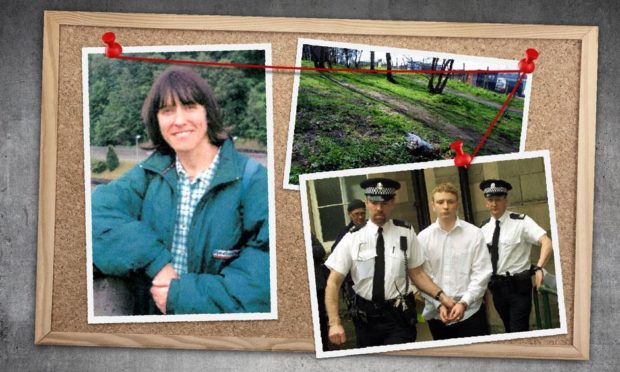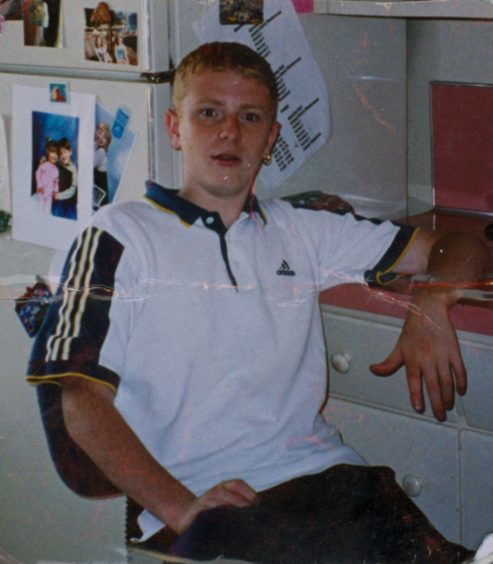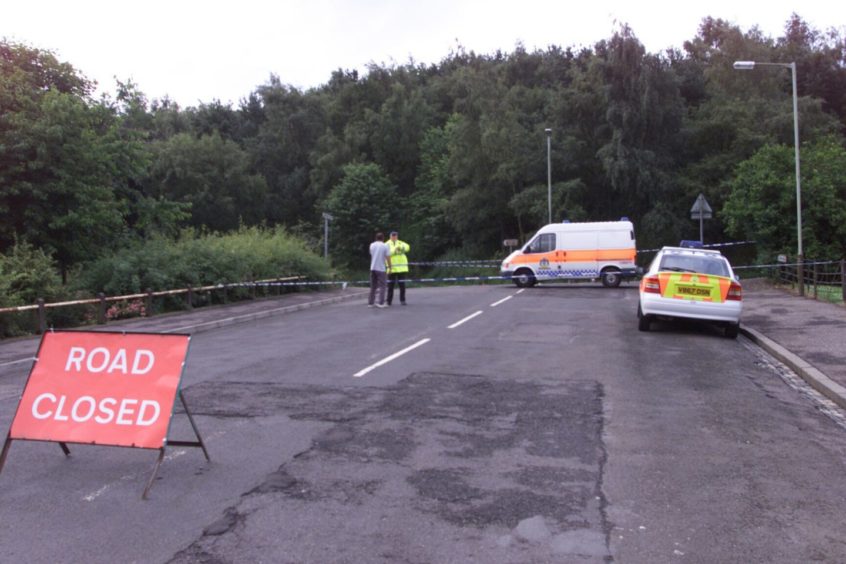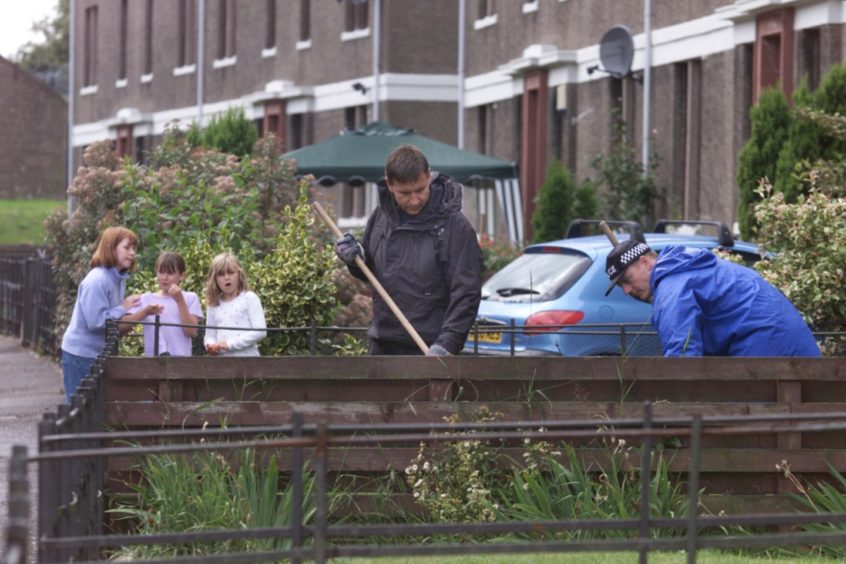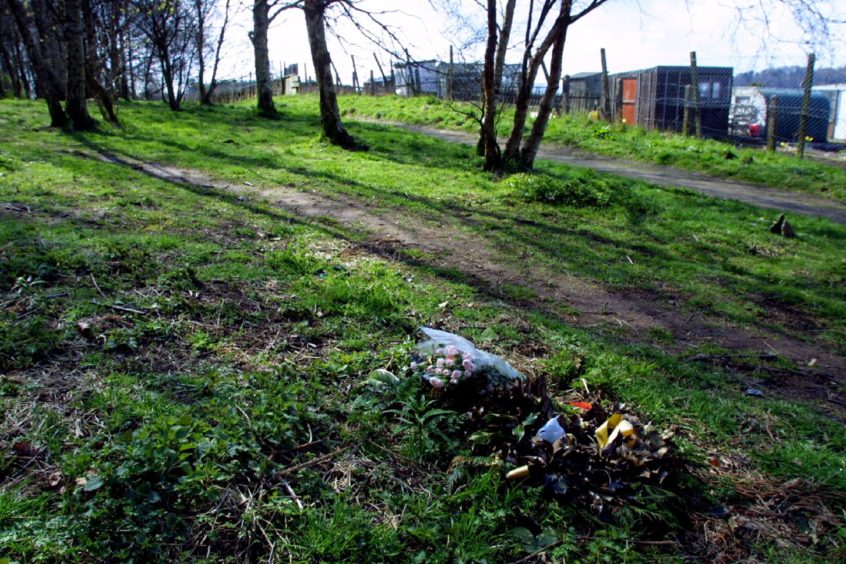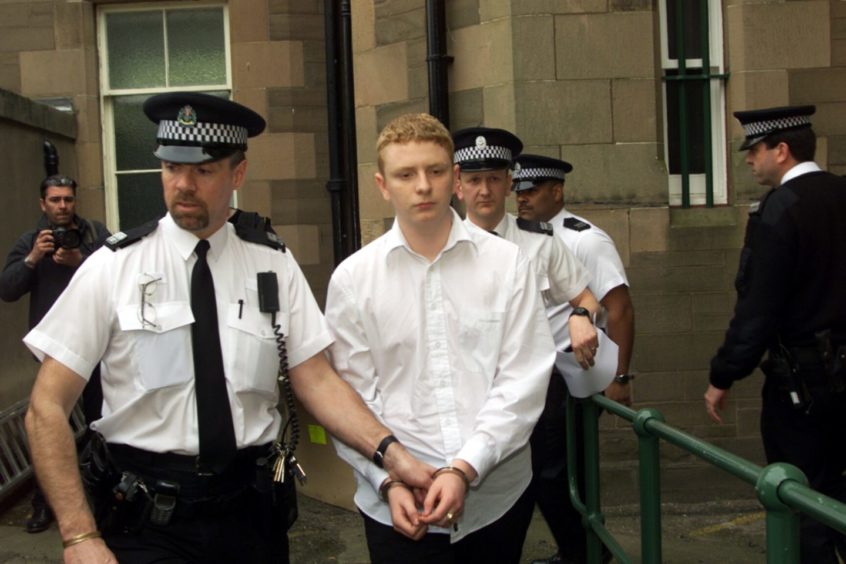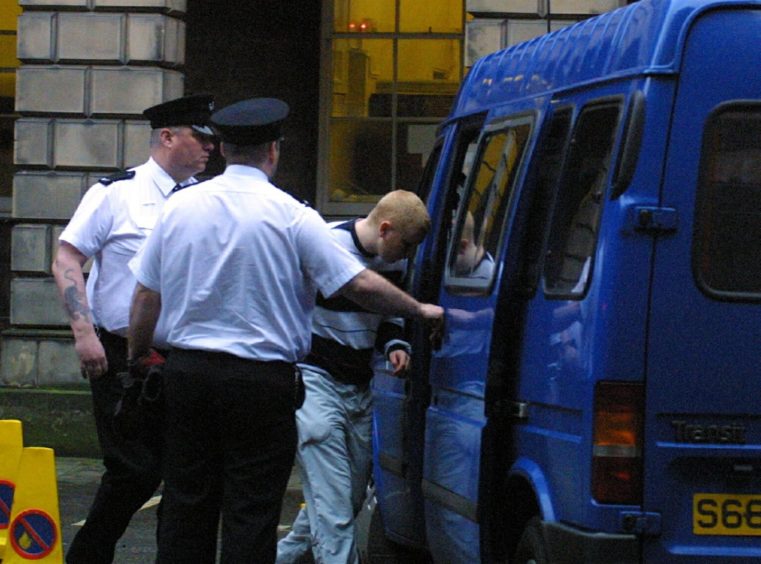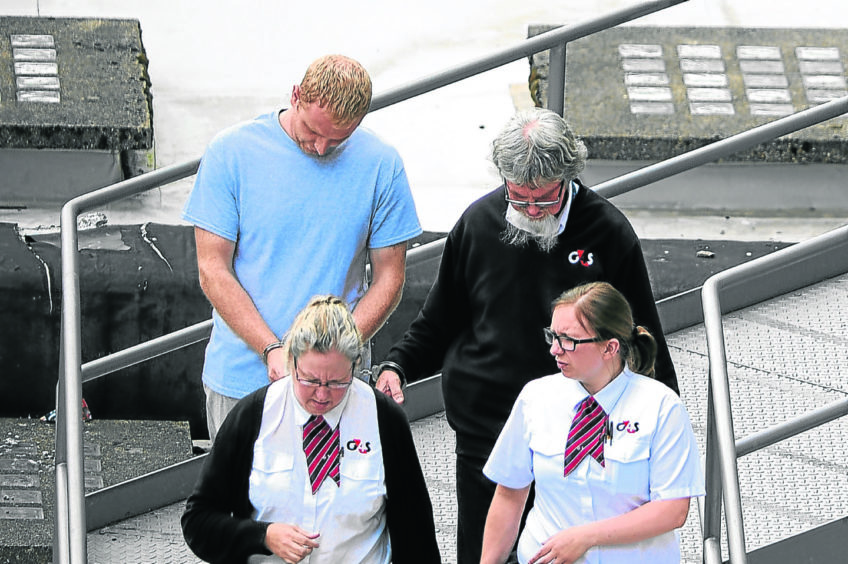“Someone is going to end up getting something done to them and it won’t be pleasant.”
A resident penned a letter to Robbie McIntosh’s mother nearly five months before her son murdered 34-year-old Anne Nicoll on Dundee Law on August 2 2001.
The unsigned letter, written in block capitals, was postmarked March 19 2001.
But it was posted through a neighbour’s letterbox in error and not passed on to the woman to whom it was written.
McIntosh was part of a gang who thought nothing of carrying knives and taking drugs.
Here was a clique that spent hours commandeering a kids’ playpark, nipping off into the wooded paths to smoke a joint, and staying out all night.
McIntosh surfed pornographic websites – featuring graphic images of rape, torture, child rape and murder – in the months before the killing.
Peace was shattered
Anne’s routine was to walk dog Sophie, which lived with her father nearby, on the Law before and after work, which normally took around 40 minutes.
On the day she died, Anne had gone out to walk Sophie around 6.30pm with the expectation she would return to Byron Street at about 7.15pm.
In an instant, the peace of a quiet summer evening was shattered.
McIntosh walked up Dundee Law, stabbed Anne 29 times on a footpath, stamped on her face, and snuck off through the undergrowth.
One of the early blows severed her voice box, meaning she could not cry for help.
When she had not returned by 7.25pm, partner Gordon McKenzie phoned her father, and, on being told she had not come back, had gone to look for her.
Mr McKenzie followed her usual route along Kenmore Terrace, up Kinpurnie Place and up the path on the Law itself, but saw nothing until he became aware of Sophie.
McIntosh by now had returned to his Kenmore Terrace home to shower before going back to Dundee Law where he watched Mr McKenzie discover Anne’s body.
Mr McKenzie tried unsuccessfully to get a reaction from Anne by slapping her face before calling for an ambulance, and for her father Angus, using his mobile phone.
He then returned to where Anne lay in a tangle of undergrowth and again tried to get some reaction by shaking her and feeling for a pulse, but without success.
Anne’s father arrived about the same time as two ambulance paramedics, who could detect no sign of life and agreed there was nothing further they could do.
Police were on the scene within five minutes.
Meanwhile, McIntosh walked into Mario’s Blue Grotto chip shop at the foot of the Law and the cocky teenager could not contain his excitement.
“Did you hear there’s been a murder on the Law Hill?”
He bought a pile of fritters and told staff a woman had been stabbed, police and forensic scientists were there and that he was going back for another look.
McIntosh sat eating fritters on the swings in a playpark overlooking the murder scene with his gang before being sent from the area by police.
He later had his name and address taken by plain clothes officers.
The Law was closed to the public and the surrounding roads were sealed off.
The next day, McIntosh passed the chip shop and called in for his usual pie supper.
“I told you,” he said.
Desire to catch the killer
As locals stayed indoors, a huge team of police – some drafted in from a neighbouring force – continued their painstaking search of the route taken by Anne.
For days officers searched the hill and spoke to hundreds of fearful residents, trying to piece together clues to the identity of the killer and work out a motive.
More than a dozen houses across the city were painstakingly searched in the hunt for evidence.
Police officers due to go away during the holiday fortnight called their families and said their plans were changing, such was the desire to catch the killer.
McIntosh was interviewed within the first 48 hours of the inquiry and was regarded by lead detectives as a key witness in the early stages of the investigation.
As one of the youths congregating on the periphery of the Law, McIntosh provided police with what they thought was a series of potential leads.
He told police of at least four people he claimed had been on the Law that evening, one of whom he described as a “weirdo”, another whom he said was a “well-known junkie”, and a man he said was peering through bushes and was “not right in the head”.
However, close examination of his story, and that of others who had been in the area on the night, revealed discrepancies.
By the following week, having scoured witness statements, it was felt “there was more to the Robbie McIntosh element of the investigation than had previously been apparent”.
As a result, a massive operation was put in place to round up all the witnesses involved and interview them simultaneously at police stations across the city.
Police were able to deduce that McIntosh had been telling people about the stabbing before the victim’s body had been discovered.
Sergeant James Graham wanted to see McIntosh again after he had given a second statement clarifying some of the points he made in his initial interview.
He went to his house but was told he had gone to Glasgow with his grandfather to see off his sister, who had been home on holiday from Canada.
Story started to unravel
McIntosh was detained by police at Glasgow Airport before he was interviewed by DS Graham and another officer on both video and audio tape.
Police challenged McIntosh’s version of events that he repeated “rumours” about the stabbing of Anne barely minutes after an ambulance had arrived at the scene.
He told police he had seen the ambulance arrive at Dundee Law, but was told logic suggested he could not have seen it, since it arrived at Kinpurnie Place at 7.51pm, and he was caught on video at a shop some distance away at 7.53pm.
Then the forensic case began to come together, crucially, with the discovery of Anne’s blood on a rolled-up sock belonging to McIntosh.
The breakthrough was almost as shocking as the killing itself.
McIntosh was not some hardened adult criminal, but a 15-year-old boy.
One thing which consistently eluded police was the blade used to stab Anne but they were confident they had got the right man and that he acted alone.
After an 11-day trial at the High Court in Forfar in April 2002, McIntosh was found guilty of Anne’s murder.
He had denied the charge and lodged a special defence of incrimination against a 16-year-old friend.
Lord Bonomy said that for the crime of murder there was only one sentence he could impose and he ordered McIntosh to be detained in custody without limit of time, with a recommendation he serve a minimum of 15 years.
He said: “I also have to take regard of the extremely violent nature of the attack on Anne Nicoll.
“One witness described her as being butchered and no better description can be applied to the way in which she met her death.
“It was a dreadful way for anyone to lose their life and for that conduct there is no explanation.”
A spoilt brat and a waster
Anne’s father Angus spent his 77th birthday in his home with his daughter’s dog Sophie, waiting to hear the fate of his former neighbour.
“I think that he was a nobody who wanted to be somebody,” said Mr Nicoll.
“My personal view is that he wanted notoriety.
“I didn’t even know him, just by sight really.
“But I sized him up straight away – he was a spoilt brat and a waster.”
Only two people knew what really happened on the Law that terrible day, but McIntosh kept his own counsel about what was in his mind when he reached for his knife.
McIntosh was held in secure juvenile accommodation near Montrose, no longer afforded his usual lie-in until 11am, followed by a day’s aimless loafing and his customary sliced sausage on a roll which he claimed kept him going until tea-time.
He was transferred to the young offender’s institute at Polmont in Falkirk aged 18 and later moved to HMP Greenock aged 21, to serve out the rest of his sentence, before his first period of temporary release was approved by Scottish ministers in 2015.
McIntosh was transferred to the open estate at Castle Huntly in 2016 and completed a number of short periods of home leave.
On the 16th anniversary of Anne’s murder he was granted another period of home leave at his mother’s house in Bridgefoot.
But McIntosh struck again.
On August 7 2017, he left home around 11.45am and was carrying a rucksack as he made his way to Templeton Woods.
He walked along the secluded wooded path towards the water tower, where he attacked dog walker Linda McDonald with a dumbbell.
He fled after being disturbed by two dog walkers who had heard Mrs McDonald screaming.
She sustained multiple injuries including two skull fractures.
Guards searched the murderer’s cell in the days after the attack.
They found three library books – including a crime novel about a lone male who attacked females in wooded areas.
McIntosh pled guilty to the attempted murder.
He was given a lifelong restriction order when he appeared at the High Court in Edinburgh, meaning he could spend the rest of his life behind bars.
